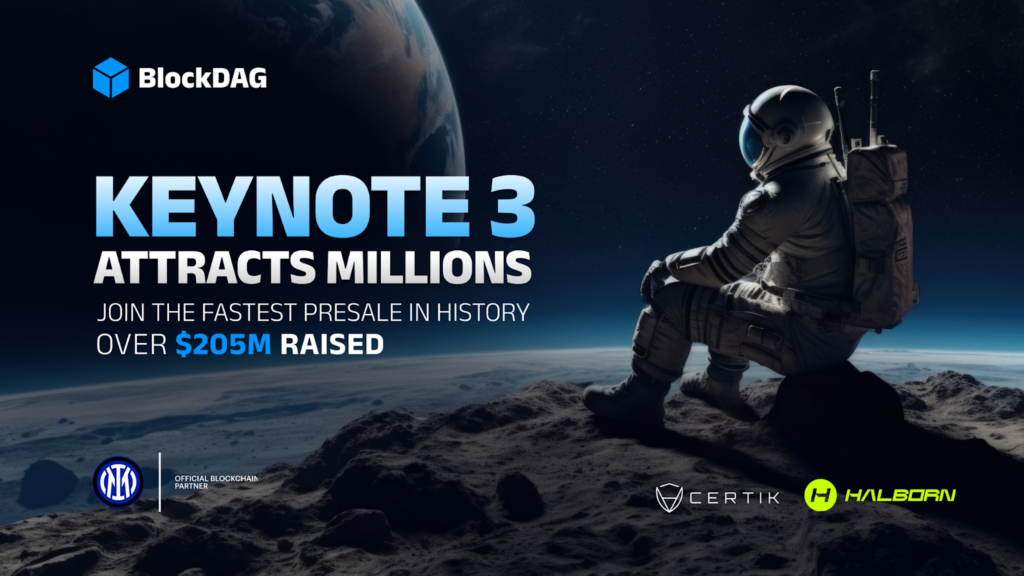BlockDAG’s Technological Innovation: A Hybrid Architecture Beyond Traditional Blockchains
Recently, during its Keynote 3, BlockDAG unveiled a comprehensive upgrade of its technology ecosystem, centered on the innovative DAG-PoW hybrid architecture. Unlike the linear structure of traditional blockchains, BlockDAG utilizes a Directed Acyclic Graph (DAG) to process transactions in parallel, combined with Proof-of-Work (PoW) to ensure security. This design has achieved a network throughput of 65,000 TPS, with transaction confirmation times reduced to seconds. Not only does it solve congestion issues seen in Bitcoin and Ethereum, but it also reduces energy consumption by 90%, establishing a protocol that balances efficiency with sustainability.
Another major highlight is the developer ecosystem. BlockDAG has launched a low-code/no-code development platform supporting Solidity and Rust, allowing even non-technical users to rapidly deploy dApps and reducing development costs by 40%. Additionally, improvements in smart contract tools and API interfaces have attracted over 5,000 development teams to join its ecosystem.

Market Performance: Presale Frenzy and Institutional Entry
Since the presale began in January 2025, the BlockDAG token price has surged from $0.001 to $0.0248, an increase of 2,380%, raising a cumulative total of over $205 million and selling 18.9 billion tokens. Mining rig sales have also been robust, with 7,811 units of the X100 miner sold, a daily output of 2,000 BDAG tokens, and cumulative miner earnings exceeding $28.3 million.
Institutional investors now account for 41% of participation, with BlackRock and Goldman Sachs purchasing large volumes through OTC channels, considering BlockDAG as a “Web3 infrastructure stock.” Analysts predict that following the mainnet launch in Q3 2025, BDAG prices could break $1, with a target price of $30 by 2030, potentially delivering long-term returns comparable to early Bitcoin gains.
Ecosystem Expansion: From Developer Support to Global Partnerships
BlockDAG’s ecosystem strategy is focused on empowering developers and increasing user engagement. It has launched a global hackathon offering prizes of over $100,000 and established a bug bounty program to incentivize security testing. Furthermore, BlockDAG Academy offers free educational resources, and novice developers can access onboarding guides via the JuCoin Learning Center.
On the branding front, BlockDAG has formed strategic alliances with international clubs like Inter Milan and organizations like the UFC to expand its user base. The launch of the X1 Miner mobile application has attracted 750,000 active users, and its “invite mining” mechanism lowers participation barriers. This “community-driven” approach helped BlockDAG rank among the top three in Bloomberg’s “2025 Top 10 Disruptive Technologies” list.
Challenges and Future Outlook: Technological Delivery and Regulatory Adaptation
Despite its optimistic outlook, BlockDAG faces two major challenges:
-
Mainnet Delay Risk: The current token price partly reflects high technological expectations. Should the mainnet fail to launch on schedule, a sell-off could ensue.
-
Regulatory Uncertainty: Additionally, scrutiny by the US SEC on PoW mechanisms might affect mining rig sales.
In the long term, the rise of BlockDAG could reshape the Web3 landscape. Its blockchain cloud services, in collaboration with Oracle, have already penetrated the supply chain finance sector, while its DAG structure supports cross-chain interoperability, laying the groundwork for RWA (tokenization of real-world assets). If its technical promises are fully realized, BlockDAG has the potential to become the first DAG project to reach a market cap of $100 billion, driving mass adoption in both DeFi and GameFi sectors.




